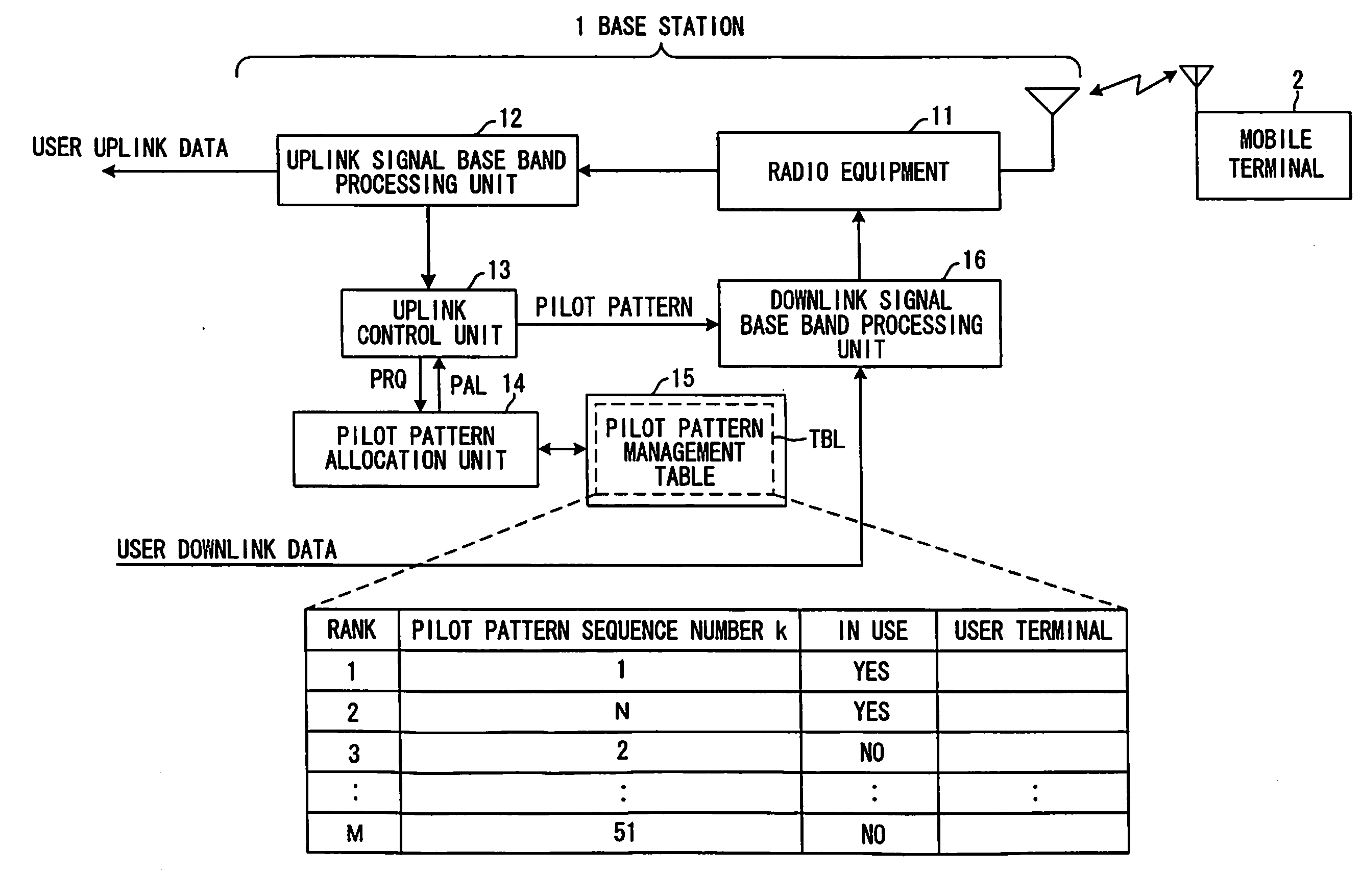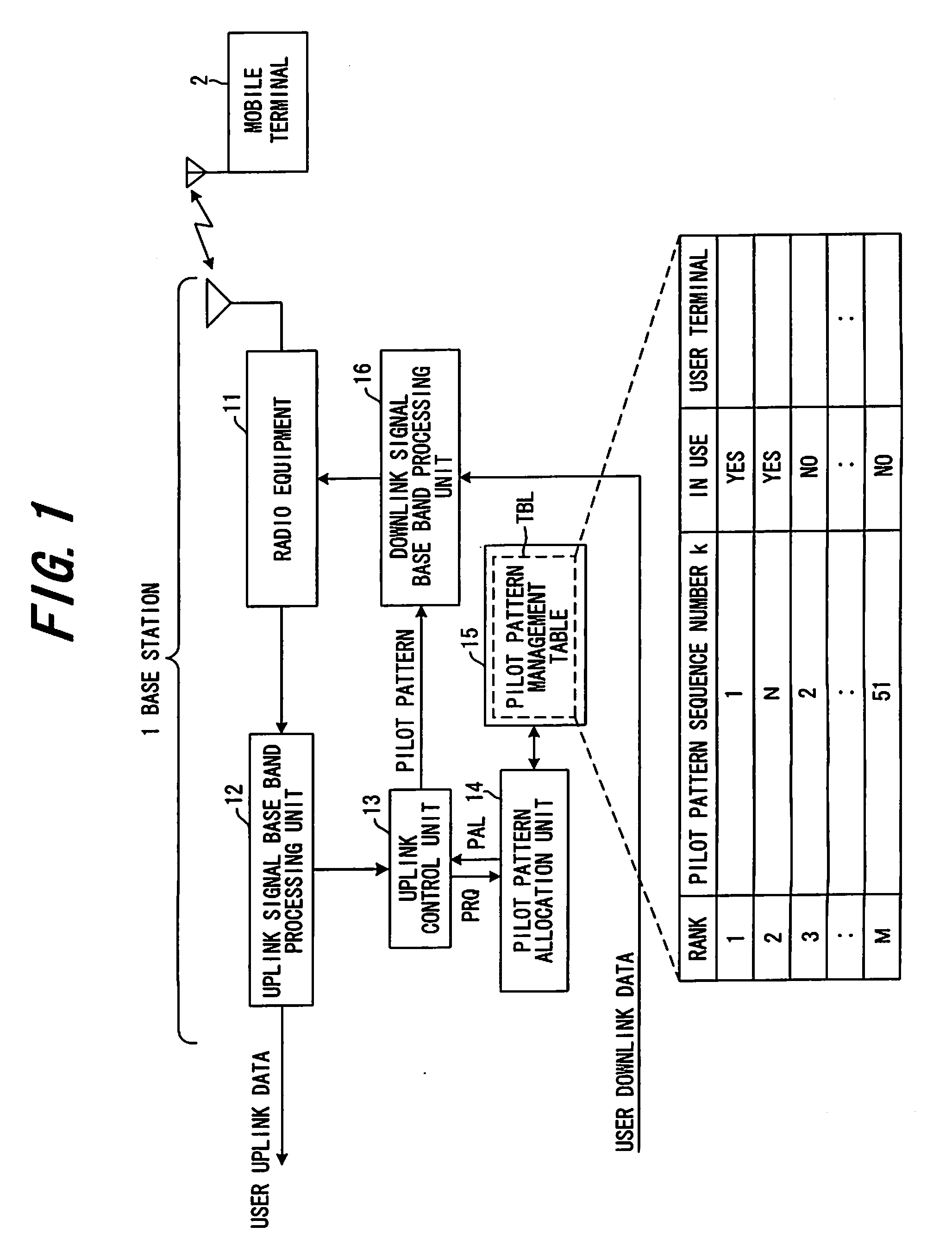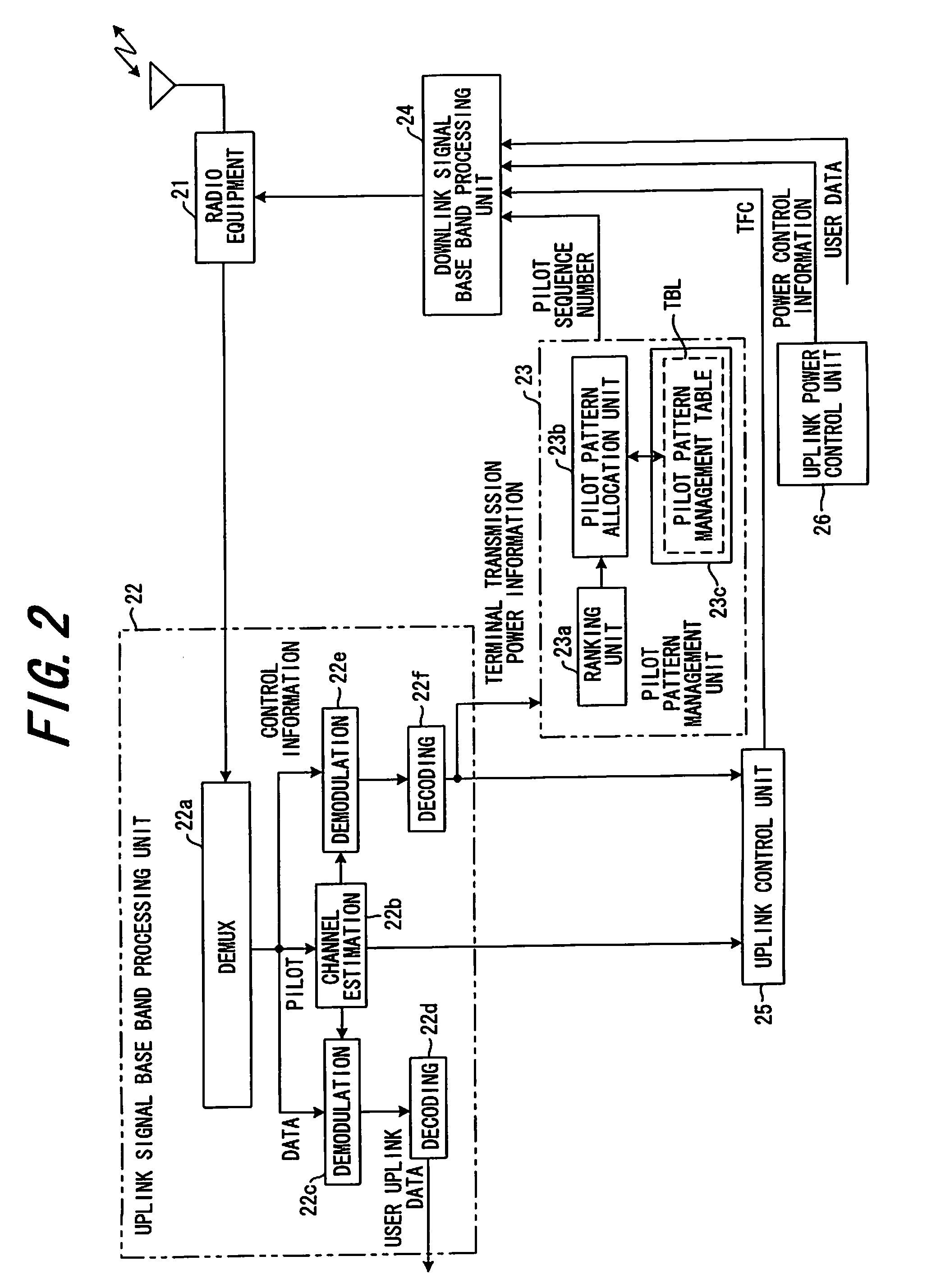Base station, radio communication system and pilot pattern decision method
a radio communication system and pilot pattern technology, applied in the field of base stations, can solve the problems of terminal drop reception quality, transmission characteristics deterioration, distortion generation, etc., and achieve the effect of preventing distortion and improving reception quality in the base station
- Summary
- Abstract
- Description
- Claims
- Application Information
AI Technical Summary
Benefits of technology
Problems solved by technology
Method used
Image
Examples
first embodiment
(A) First Embodiment
[0063]FIG. 1 is a block diagram of a base station according to a first embodiment, where a base station 1 stores a rank table on a peak to average power ratio of each pilot pattern, and allocates a pilot in order of goodness of peak to average power ratio to a user terminal 2 when a connection is established with the user terminal 2.
[0064]A radio equipment 11 has a transmitter and a receiver, and the receiver converts the frequency of a receive signal from a radio frequency into a base bandfrequency, and inputs the base band signal to an uplink signal base band processing unit 12. The base band processing unit 12 performs demultiplexing and demodulating of user data and control data from the input signal, and inputs the control data to an uplink control unit 13. The uplink control unit 13 requests a pilot pattern allocation unit 14 to allocate a pilot pattern using a signal PRQ when a connection is set.
[0065]When each pilot pattern of a CAZAC sequence is ranked b...
second embodiment
(B) Second Embodiment
[0069]FIG. 2 is a block diagram of a base station according to the second embodiment. In the second embodiment, a pilot pattern is decided based on the transmission power of the user terminal.
[0070]A radio equipment 21 includes a transmitter and a receiver, which are not illustrated, and the receiver converts a frequency of a receive signal from a radio frequency into a base band frequency, and inputs the base band signal to an uplink signal base band processing unit 22. The signal format consists of a pilot PL, control information CNT, user data DT, and CRC for error detection, for example, as shown in FIG. 3.
[0071]A demultiplexing unit 22a of the base band processing unit 22 demultiplexes a pilot, user data and control data from the input signal, a channel estimation unit 22b estimates a channel (transmission path characteristic) using the pilot signal and outputs a channel estimation value, a demodulation unit 22c performs channel compensation based on the ch...
third embodiment
(C) Third Embodiment
[0085]FIG. 6 is a block diagram of a base station according to a third embodiment, where the same components as those in the second embodiment in FIG. 2 are denoted with the same reference symbols.
[0086]Since the transmission power of a user terminal increases as the user terminal becomes more distant from the base station, a pilot pattern is decided based on the position information (distance from the base station) of the user terminal in the third embodiment.
[0087]A receiver of a radio equipment 21 converts a frequency of a receive signal from a radio frequency into a base band frequency, and inputs the base band signal to an uplink signal base band processing unit 22. The base band processing unit 22 demultiplexes a pilot, user data and control data from the input signal, and inputs control information to a terminal information processing unit 27. The terminal information processing unit 27 extracts position information of a user terminal from the control info...
PUM
 Login to View More
Login to View More Abstract
Description
Claims
Application Information
 Login to View More
Login to View More - R&D
- Intellectual Property
- Life Sciences
- Materials
- Tech Scout
- Unparalleled Data Quality
- Higher Quality Content
- 60% Fewer Hallucinations
Browse by: Latest US Patents, China's latest patents, Technical Efficacy Thesaurus, Application Domain, Technology Topic, Popular Technical Reports.
© 2025 PatSnap. All rights reserved.Legal|Privacy policy|Modern Slavery Act Transparency Statement|Sitemap|About US| Contact US: help@patsnap.com



